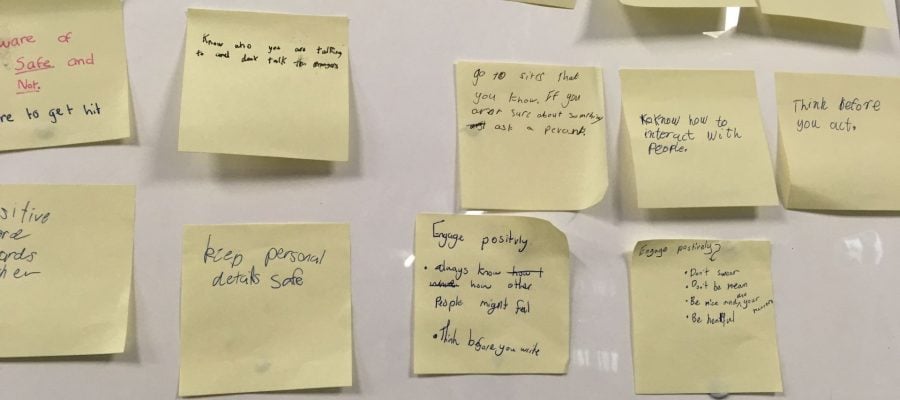In Yr 6 this term, the English task is focussed on the creation of an advertising campaign.
In designing this learning for this unit, the Yr 6 teachers identified a possible alignment with the work occurring across the school on digital citizenship. So, working in this way would enable the outcomes for English to be achieved whilst deepening the students understanding of a priority for the school in terms of responsible and respectful behaviour when online.

As part of the early stages of this unit, the students needed to explore the core principles of digital citizenship to build up their background knowledge regarding the topic about which they would be creating the advertising campaign.
The app “Postit Plus” was used to allow the initial brainstorming and the subsequent filtering that then needed to occur as the students categorised each of these ideas into groups.
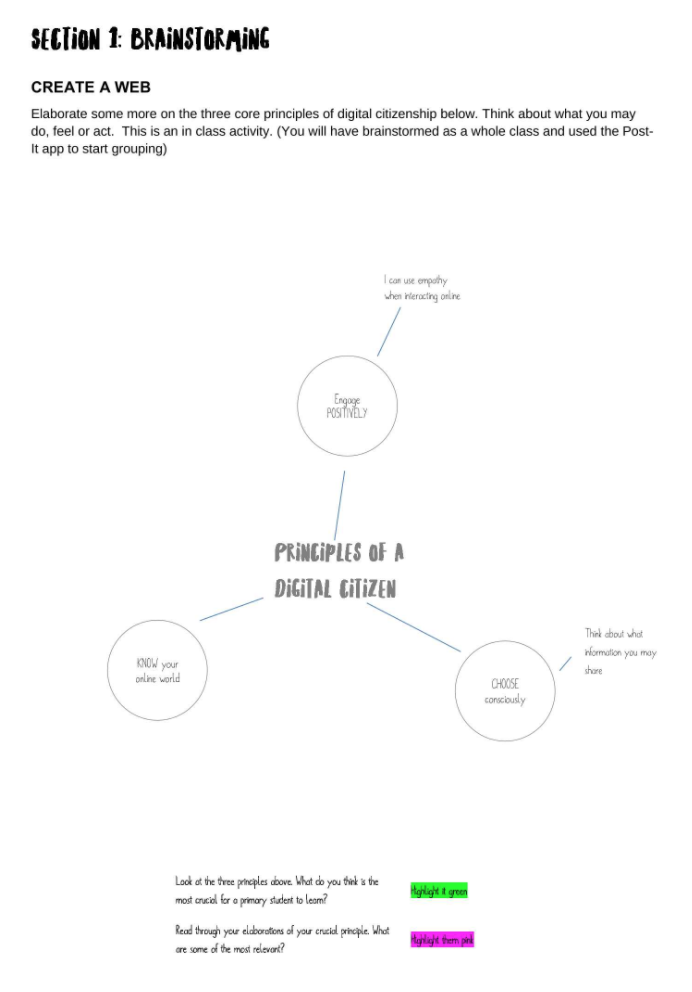
Below is an image of the actual post-its with the students contributions.
The app was then used to take a photograph of the post-it notes, the image air-dropped to the students which then allowed digital manipulation of the notes. In being asked to manipulate and categorise the students were having to critically assess and analyse the ideas – connecting them to others that were alike.
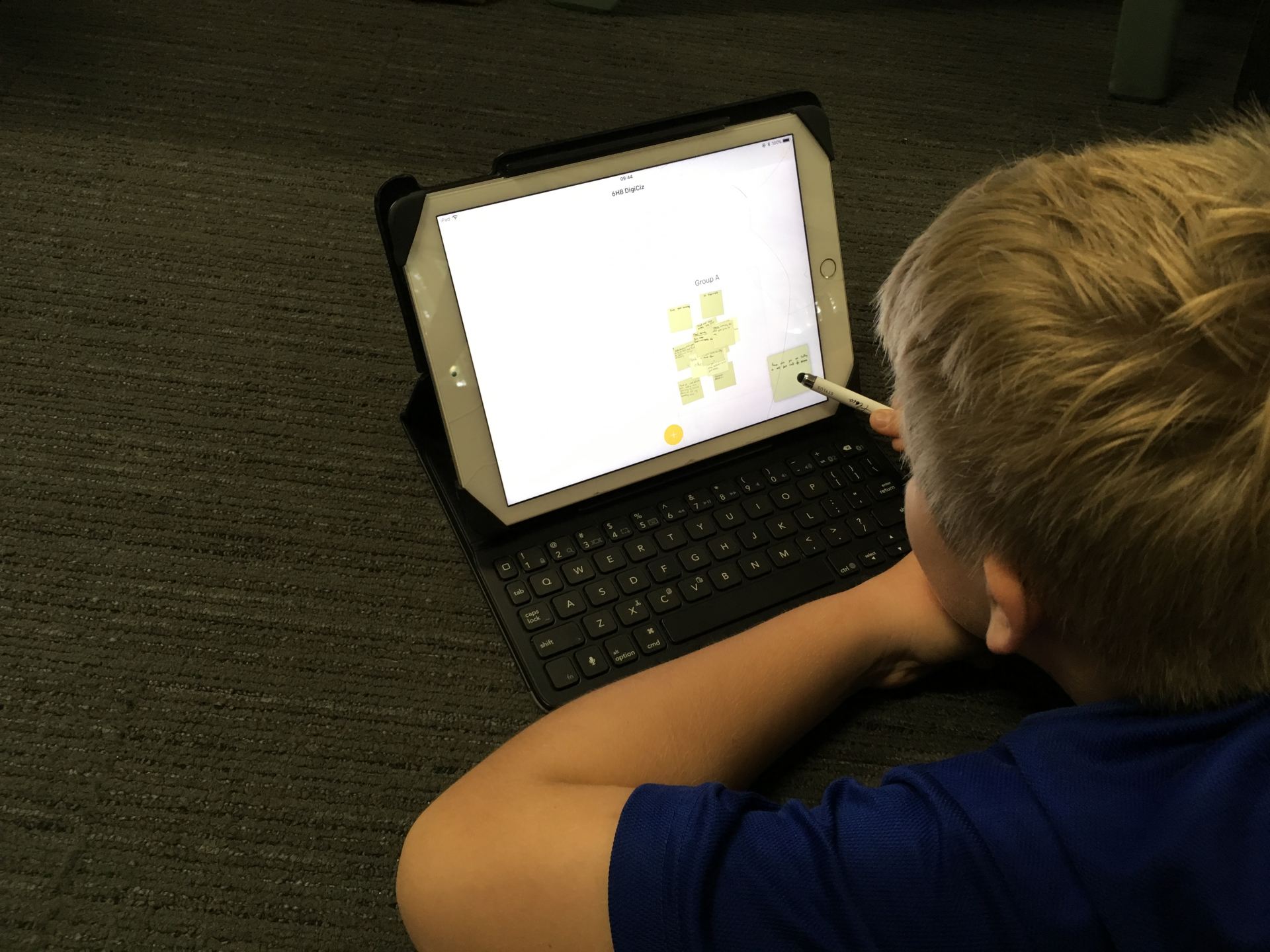
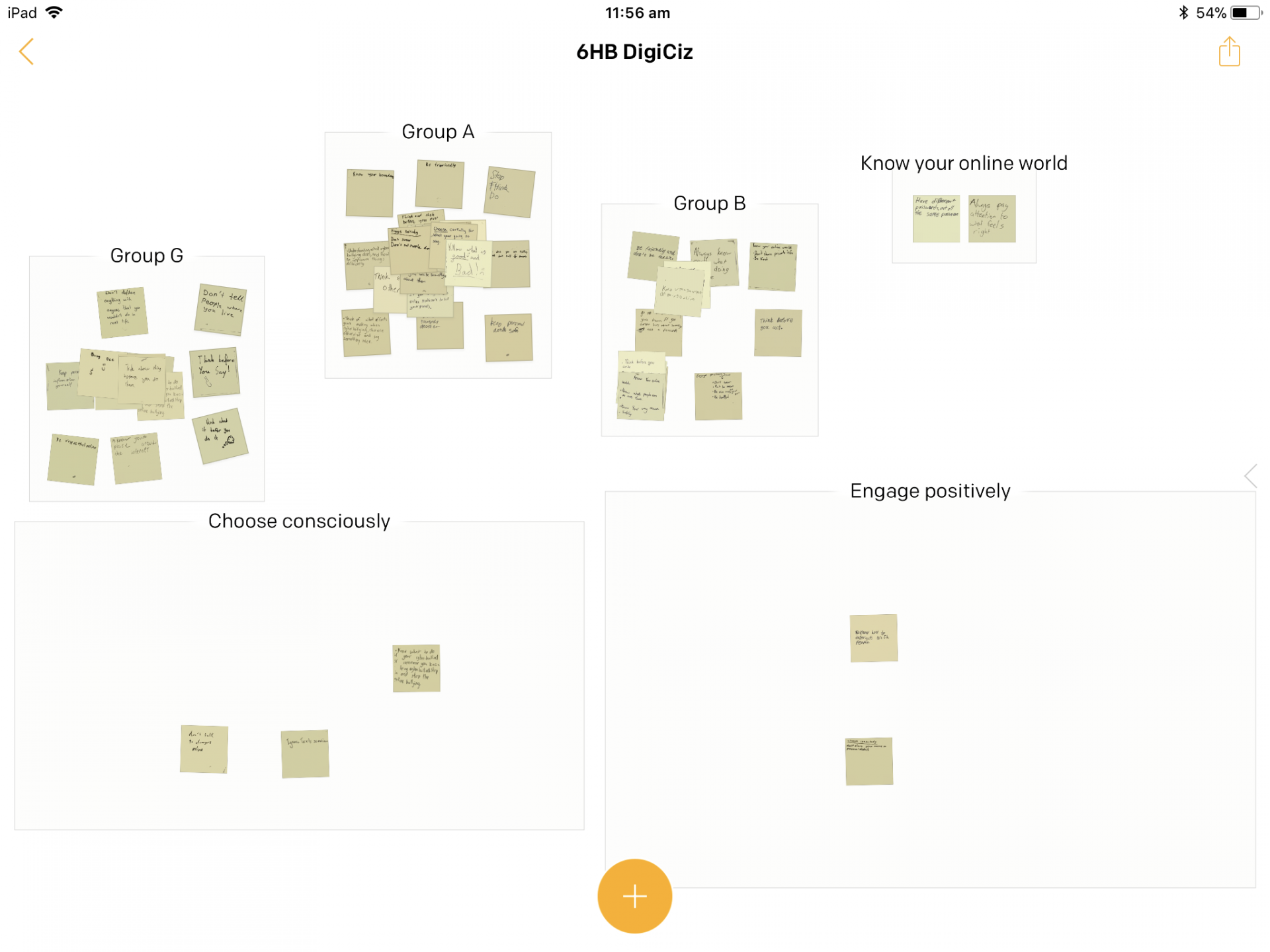

Finally, the categories were revealed as:
- Know your online world
- Engage positively
- Choose consciously

This activity was interesting from many perspectives.
If we were only looking at the use of technology to support the learning – a model like the SAMR model would assist us. More recent work with this model has shown that persistent and sustained use of just the S level of technology use will have a net zero improvement in student outcomes. It is only when teachers implement experiences that have a clear pathway from the S to higher levels or when they are persistently working within Modification and Redefinition, that the effect size is significant enough to have an impact on learning. (Ref: http://hippasus.com/rrpweblog/archives/2017/07/SAMREdTechQuintet_SettingTheStage.pdf)
This activity allowed a group activity (hands on brainstorming with postits) to become an individual synthesis activity. This was enabled through the use of the technology with the students being able to take the group outcome and individually manipulate and categorise each offering. The way that they were then able to mirror their own image to the board and justify their reasoning during sharing again showed technology supporting higher level thinking.
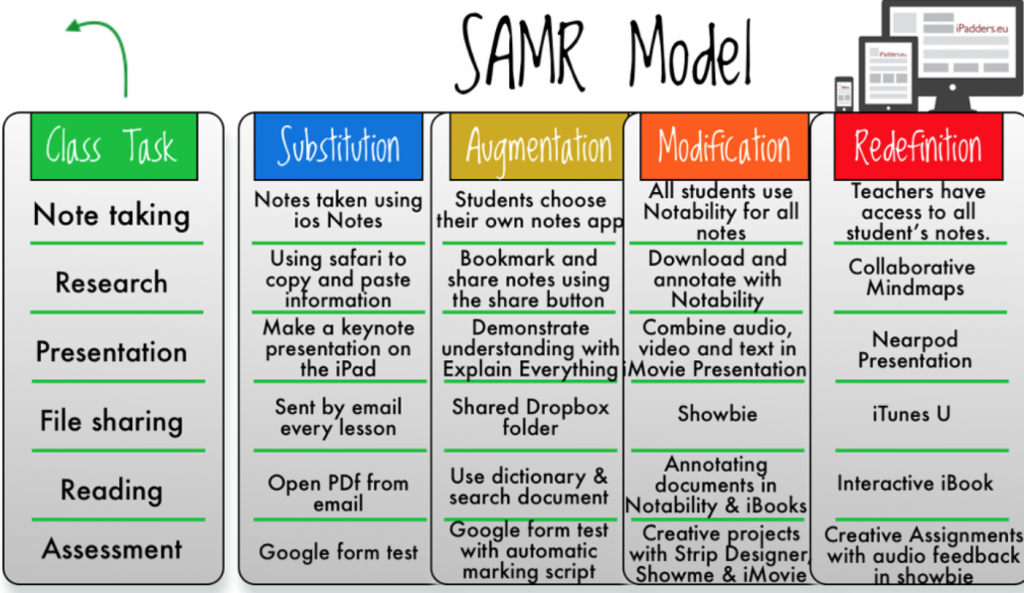 ref: Kathy Schrock
ref: Kathy Schrock

